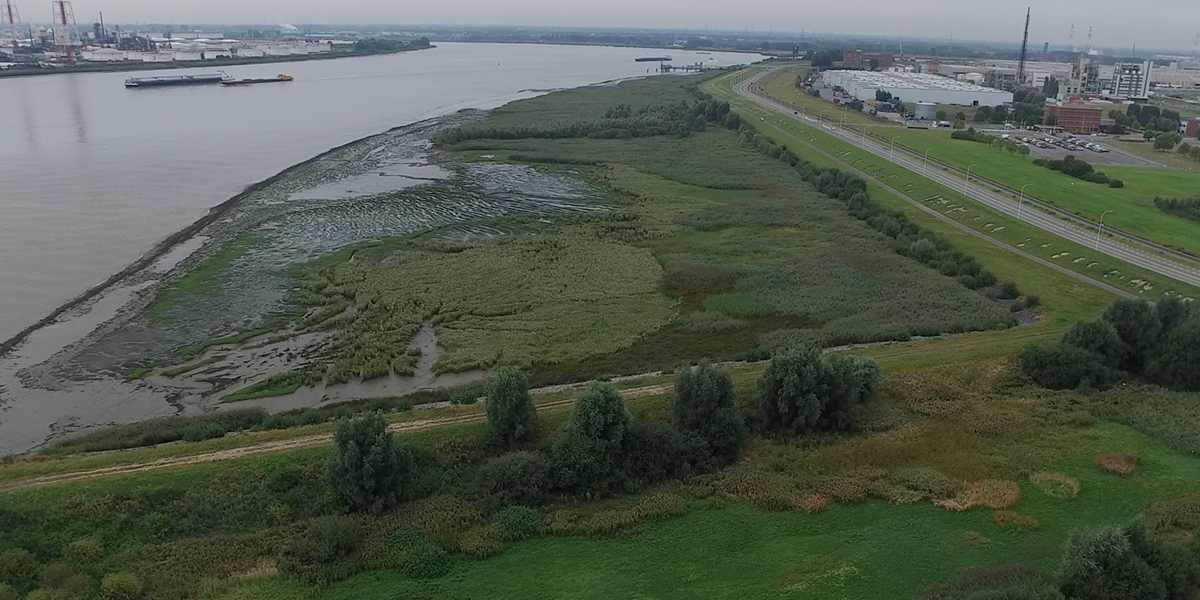
By using large experimental data sets to feed a machine learning model, we can enable wetland establishment for flood defense by managing the local conditions, thereby overruling uncontrollable global change stressors. This is revealed by an international team of scientists from China, the Netherlands, the UK, and Belgium, in a publication in Geophysical Research Letters.
Worldwide, coastal wetlands like salt marshes and mangroves are increasingly recognized as valuable natural defenses that protect coasts. Tidal salt marshes enhance flood safety by being ‘wave absorbers’ that protect the dikes behind them, and by being ‘flood fighters’ that lower the flood depth by limiting the size of breaches when a dike would fail during severe storms. This raises the question if we can establish and restore these wetlands where needed, now that the sea level is rising, and storms become stronger and more frequent.
The increasing vulnerability of coastal wetlands due to climate changes is a global concern, given the many valuable services they provide, like carbon storage and hosting a great biodiversity. “Although the need of restoring coastal wetlands is widely recognized, little is known about the key processes controlling wetland vegetation establishment”, says Zhan Hu, an Associate Professor in marine science at the Sun Yat-Sen University in the Chinese coastal city of Zhuhai.

Using computer models to predict marsh establishment
Hu is the leading author of this paper and headed the international research team consisting of engineers, physical geographers and ecologists. “From the large data sets generated in recent field and laboratory experiments, we know that the establishment process of wetland vegetation is complex and depending on a diverse set of factors in its living environment.”
The scientists used machine learning to translate the obtained dataset into predictive models that can forecast marsh establishment under various environmental conditions. “This allowed us to venture out into the unknown future”, says Hu.
Local conditions more important than global change
The results of this computer model revealed that marsh establishment can be well managed, despite the ongoing global change. Hu: ”The good news is that controllable local conditions are much more important than uncontrollable climate change stressors.” Overall, this provides a positive outlook for future coastal wetland restorations.”
The use of machine learning provided some important insights on the local scale. ”It is especially the sediment supply, the local wave height, and shape of the tidal flat in front of the marsh that we need to control to counteract the threats of changing wind climate and rising sea level”, tells Hu.
Smart management of tidal flats to establish marshes
”These findings are important in that they broaden our focus from the dike-protecting marshes, towards managing the whole ecosystem, including the tidal flats fronting the marsh”, says Tjeerd Bouma, ecologist from the NIOZ Royal Netherlands Institute for Sea Research and Utrecht University.
Around the globe, the sediment supply is currently decreasing in many estuaries due to the upstream management of rivers, like building hydraulic dams for power generation. Present study suggests that making using dredged material can counter this effect and strengthen marshes. It also shows that the smart use of simple wave breaking systems can be used to expand the marshes. “The latter was apparently well known by our ancestors” says Bouma, ”as this is exactly what was done by the construction of brushwood dams. So, although we must foremost counter global change, as was discussed in the Glasgow-meeting last week, science-based local management measures along our coasts offer great opportunities to facilitate coastal wetland restoration around the globe, in the face of global change.”

